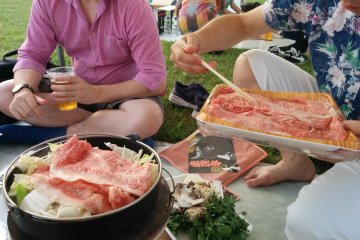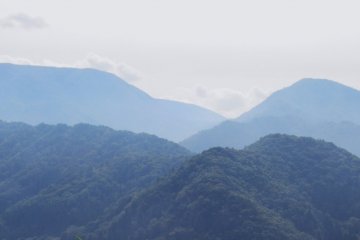Like many people, I’m interested in the 700-year history of the samurai, among whom there were many outstanding figures. One of these figures was the legendary Uesugi Kenshin, whose memory is still preserved in Japan. What was special about this man?
In the old days, names in Japan were not set for life. During a life, a name could change many times; a child's name was replaced by an adult one, then that person could take monastic orders and take on a Buddhist name. So it was with Uesugi Kenshin.
Building up power
In his younger years, Uesugi was known as Nagao Kagetora and became the head of his clan at the age of seventeen. By twenty he had subdued the entire province of Echigo. Gaining power wasn’t without fierce battles, but then Nagao Kagetora chose a different path. He decided to devote his life to the service of justice, joining battle only to administer it. Thus, the appearance of the powerful and respected ruler that was Uesugi Kenshin. Unlike his rivals, Kenshin didn’t seek to conquer the entire country. He only wanted peace and prosperity for his lands.
The main area associated with Uesugi Kenshin is Kasugayama Castle. Unfortunately, the castle hasn’t been preserved, but there is a shrine dedicated to Kenshin and a museum in Kasugayama. On a high mountain, near the ruins of the castle, there is a monument to Uesugi Kenshin overlooking the Echigo mountains and the sea.
Take the Hokuriku Shinkansen to Joetsu-myoko Station, where you can transfer to the JR Myoko-Haneuma Line on to Kasugayama Station.
Two opponents meet
On the way to Kasugayama, you can visit Nagano and the site where Uesugi Kenshin and Takeda Shingen fought - Kawanakajima. Here, the two opponents met several times, but their confrontation was never resolved in anyone's favor. A monument here, reflecting one legendary moment when Uesugi Kenshin struck from a horse at Takeda Shingen with a sword, but Shingen, without getting up from a camp chair, repelled the blows with a metal signal fan. Those who visit the site - still not built up with modern buildings - say it makes a powerful impression.
Kawanakajima can be reached by a 25-minute no.30 bus ride from Nagano Station.
Changing fates
Uesugi Kenshin died suddenly, at the age of 49, without identifying an heir. A war between two adopted sons was won by his own nephew, Uesugi Kagekatsu. The fate of the Uesugi Clan, which tried to hold the banner of justice high with all its might, was complex and contradictory. Similar fates were repeated by many clans as the country began to be unified first, by Oda Nobunaga, Toyotomi Hideyoshi, and then finally by Tokugawa Ieyasu. Under Hideyoshi, the Uesugi clan moved to Aizu-Wakamatsu to guard the northern borders of the Hideyoshi's possessions and began the construction of Tsuruga Castle.
From Kasugayama, you can visit Niigata (Kasugayama-Naoetsu – Nagaoka-Niigata). At the time of Uesugi, Niigata was not yet a city, but the Uesugi Clan was mining gold on nearby Sado Island. From Niigata you can take a day trip to Sado Island and visit these mines. From Niigata you can take the JR Shinetsu Line to Niitsu Station, and then the JR Ban-etsu West Line to Aizu-Wakamatsu.
The Uesugi Clan didn’t stay in Aizu-Wakamatsu for long. After the decisive battle of Sekigahara, in which the Uesugi was on the losing 'Eastern Coalition' side, the clan was exiled to the remote northern province of Yonezawa. In that small city, you'll find the Uesugi Museum, the Uesugi Clan Mausoleum and the Uesugi Shinto shrine.
From Aizu-Wakamatsu to Yonezawa, take trains via Koriyama Station (Ban-etsu-West Line to Koriyama, Tsubasa Shinkansen to Yonezawa).
After Uesugi Kenshin
During the reign of Uesugi Kagekatsu, the manager of the Clan was an outstanding man named Naoe Kanetsugu. He was distinguished by his loyalty to his master and clan, respected for his activities and famous for his battle helmet crowned with the hieroglyph 'A' - 'Love'. By “Love” Kanetsugu meant the love to his country and people whom he protected. The helmet is kept at the Uesugi Museum in Yonezawa. From April 29 to May 3, during the Golden Week holiday period, the Uesugi Festival is held in Yonezawa. This festival with its traditional dances and entertainment, ends with a replay of the battle of Kawanakajima. You have the opportunity to see the battle of the samurai of the late 16th century!
The city of Yonezawa is also associated with another famous ruler-the founder of the city of Sendai - Date Masamune, who was born and spent his childhood in that city.







